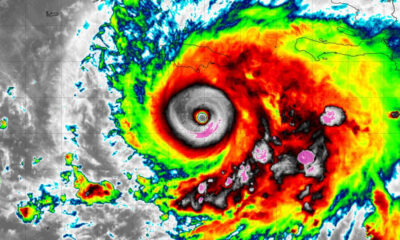Reviews
How Recent Changes in US Inflation Impact Your Forex Trades

The US Bureau of Labor Statistics (BLS) is set to release the Consumer Price Index (CPI) report for May 2024 on June 12 at 8:30 AM. The US Federal Reserve (Fed) will also hold a Federal Open Market Committee (FOMC) meeting on the same day, making it two critical events that could significantly influence financial markets. The CPI will likely impact the Fed’s decision on interest rates and provide insights into the state of the economy.
Inflation, Exchange Rates, and Forex Trading
The US inflation rate is a vital statistic that impacts the demand for the US dollar and the economy. While the government tracks inflation to manage the interest rate, investors and financial market traders use the data to determine when it is safe to buy, sell, or keep various assets for forex trading to make profits or mitigate drawdowns.
When inflation rises, the USD becomes less attractive, leading to a loss in value and demand. When inflation falls, the currency becomes more appealing and attracts investors, increasing demand. The purchasing power parity (PPP) influences the exchange rates of currency pairs to reflect the inflation differentials.
The difference in exchange rates, the demand and supply of currencies, and the perceived impact of inflation rates influence how traders behave in the market. Lower inflation stimulates greed and may attract investors to the currency. Sometimes, higher inflation may affect the Fed’s decision to increase interest rates, resulting in increased demand for the USD, which could push the exchange rate higher.
The U.S. Inflation Policy
The Fed targets an annual inflation rate of 2% as measured by the Personal Consumption Expenditures (PCE) price index. This rate is considered the most consistent with the Fed’s mandate and optimal for economic growth. The apex bank uses monetary policy tools like interest rate adjustments and treasury and agency securities holdings to manage employment and inflation rates.
Inflation also involves risk management, for which the Fed periodically reviews and adjusts its policy strategy and tools. The inflation target, monetary policy tools, risk management, periodic reviews, and adjustments allow the Fed to manage the economy and, in a way, the financial markets influenced by the USD’s value.

How Recent Changes in US Inflation Impact Your Forex Trades
The expected release of the inflation report and the Fed converging may impact the market tremendously.
Impact on Currency Value
The US economy has struggled this year, and all will watch the CPI release. Economists predict a 0.1% month-over-month increase from April, which equates to an aggregate annual rise of 3.4% (up from 3.2%), some way above the Fed’s 2% target. An expected increase of 0.3% in food, energy, and other core gauge data indicates a 0.1% fall from 3.8% to 3.7% year-on-year.
Although the CPI is important to investors, the Fed looks beneath the CPI to other vital metrics, such as the core services and insurance costs, which show a lower inflation trend. A higher inflation rate could make the USD and stocks shaky as investors adjust to potentially treacherous conditions.
Impact on Monetary Policy
Although the Fed has been hawkish about the interest rate, there is still a chance of lowering it for June. Such a decision will depend on the CPI release and the impact of the last non-farm payroll released on 7 June, which was more substantial, surprisingly. The US economy added 175,000 jobs in April 2024, a key Fed metric for rate decisions.
Economists expect the Fed to maintain exchange rates, but more CPI data with more deviation from the expected figures may accelerate a decision to lower or tighten the rate. If the CPI is higher than current projections, investors may see it as a signal that US inflation is higher, which could force the Fed to delay the easing cycle. Although that would be bullish for the US economy, the equities market could risk bearish trends in the coming weeks.
Despite raising interest rates 11 times between 2022 and 2023, the Fed may be content with one or two cuts in 2024 (although it has not cut rates so far). The FOMC, in its May 2024 report, noted that “the Committee does not expect it will be appropriate to reduce the target range until it has gained greater confidence that inflation is moving sustainably toward 2 percent.” The interest rates currently stand at 5.25% to 5.5%.

Impact on Volatility and Liquidity
Following the news release on Wednesday, 12 June 2024, traders must prepare for potentially volatile markets. A marked decrease in inflation could see a surge in market liquidity as traders bolster their bets on the Fed’s announced rate cuts. USD volatility historically increases as the CPI rises, as the latter often pushes the Fed to raise interest rates. If this continues, traders can expect more inflow to the forex market and a decreased inflow to stock markets.
Trading Forex During CPI and Interest Rate Release
Traders are likely to enjoy a lower June inflation figure and may take up bullish positions on the USD. The BLS will release the CPI before the Fed releases its report later. Key factors to watch out for include the flow of liquidity into or out of the forex market following the CPI release and the immediate market sentiment before the Fed announcement. The recent changes in the US inflation will impact forex trading as traders adjust their bets to flow with the BLS and FOMC reports.

-

 US News2 days ago
US News2 days agoJetBlue flight diverts to Tampa after altitude drop injures at least 15
-

 US News1 week ago
US News1 week agoUnwarned tornado suspected in Fort Worth as storms cause damage and power outages
-

 World6 days ago
World6 days agoU.S. Navy helicopter and fighter jet crash in South China Sea; all crew rescued
-

 Legal1 week ago
Legal1 week agoMultiple injured in shooting at Lincoln University in Pennsylvania
-

 World12 hours ago
World12 hours ago10 people stabbed on train in Huntingdon, England
-

 US News3 days ago
US News3 days agoTrump says U.S. will resume nuclear weapons testing ‘on an equal basis’
-

 US News5 days ago
US News5 days agoDamage reported in Kilgore, Texas following tornado warning
-

 World6 days ago
World6 days agoMelissa could make landfall in Jamaica as a Category 5 hurricane



